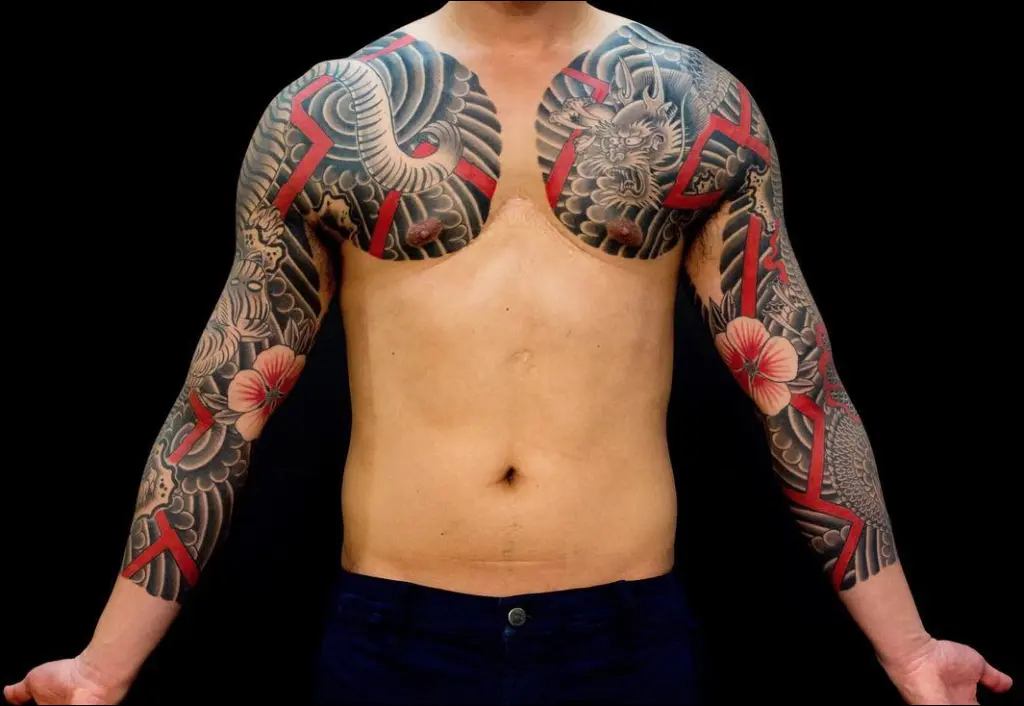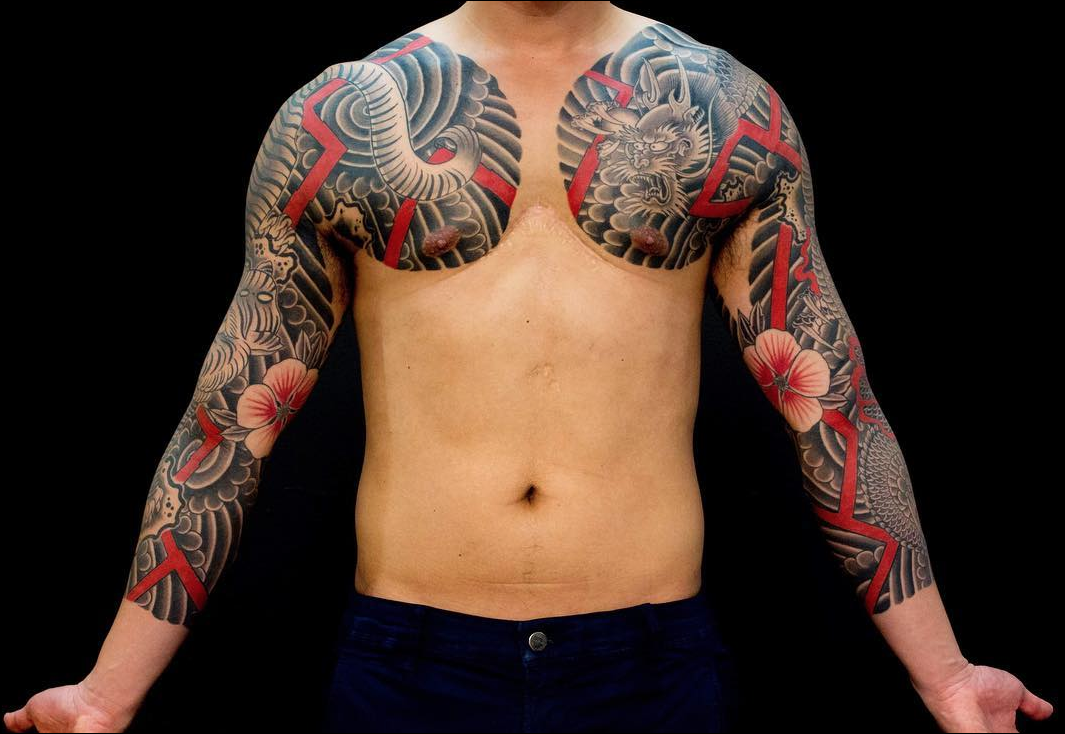
Japanese Style Tattoo Sleeves: A Comprehensive Guide
Japanese style tattoo sleeves, also known as Irezumi sleeves, are a powerful and visually stunning form of body art. These elaborate designs, often covering the entire arm or leg, are steeped in rich history, symbolism, and cultural significance. If you’re considering getting a Japanese style tattoo sleeve, understanding the nuances of this art form is crucial. This comprehensive guide will delve into the world of Japanese tattoos, exploring popular designs, their meanings, the best artists, and what to expect during the process.
The History and Significance of Japanese Tattoos
The history of Japanese tattoos dates back thousands of years. Initially used for spiritual and decorative purposes, tattoos were later associated with punishment and marking criminals. However, during the Edo period (1603-1868), tattoos experienced a resurgence in popularity, particularly among members of the working class, including firefighters and laborers. These individuals embraced elaborate, full-body tattoos as a symbol of strength, courage, and allegiance.
The term “Irezumi” refers to the traditional Japanese tattooing technique, which involves using hand-poked needles (tebori) to inject ink into the skin. This method is known for its precision, artistry, and the subtle shading that creates a three-dimensional effect. While modern tattooing methods are also used, many purists still prefer the traditional tebori technique. Understanding this history adds depth to the appreciation of a Japanese style tattoo sleeve.
Popular Japanese Tattoo Sleeve Designs and Their Meanings
Japanese tattoos are rich in symbolism, with each design carrying a specific meaning and representing different aspects of life, nature, and mythology. Here are some of the most popular motifs used in Japanese style tattoo sleeves:
- Dragons (Ryū): Dragons symbolize wisdom, strength, protection, and good fortune. They are often depicted with scales, claws, and flowing manes, and can represent various elements like water, wind, and fire. A dragon Japanese style tattoo sleeve is a powerful statement.
- Koi Fish (Koi): Koi fish represent perseverance, courage, and determination. They are often depicted swimming upstream, symbolizing overcoming obstacles and achieving success. The color of the koi can also hold different meanings, with red koi representing love and passion, and black koi representing overcoming adversity.
- Tigers (Tora): Tigers symbolize courage, strength, and protection from evil spirits. They are often depicted with fierce expressions and powerful muscles, representing the ability to overcome challenges and protect oneself from harm.
- Phoenix (Hō-ō): The phoenix symbolizes rebirth, renewal, and immortality. It is often depicted with vibrant colors and elaborate plumage, representing beauty, grace, and the ability to rise from the ashes.
- Snakes (Hebi): Snakes symbolize protection, wisdom, and good luck. They are often depicted coiled or striking, representing the ability to ward off evil and protect oneself from harm. A snake Japanese style tattoo sleeve can be a striking and meaningful choice.
- Cherry Blossoms (Sakura): Cherry blossoms symbolize the transience of life and the beauty of impermanence. They are often depicted falling from branches, representing the fleeting nature of beauty and the importance of appreciating the present moment.
- Maple Leaves (Momiji): Maple leaves symbolize the passage of time and the beauty of autumn. They are often depicted in vibrant shades of red and orange, representing the changing seasons and the cyclical nature of life.
- Water (Mizu): Water represents life, fluidity, and adaptability. It is often depicted as waves, currents, or waterfalls, representing the ever-changing nature of life and the ability to adapt to new situations.
- Wind (Kaze): Wind represents change, freedom, and movement. It is often depicted as swirling patterns or gusts of air, representing the unpredictable nature of life and the ability to embrace new experiences.
When choosing designs for your Japanese style tattoo sleeve, consider their symbolic meanings and how they resonate with your personal experiences and beliefs. Researching the history and cultural significance of each motif will help you create a meaningful and visually stunning piece of art.
Choosing the Right Artist for Your Japanese Tattoo Sleeve
Finding a skilled and experienced artist is crucial when getting a Japanese style tattoo sleeve. Look for an artist who specializes in Japanese tattooing and has a deep understanding of the art form’s history, symbolism, and techniques. Here are some factors to consider when choosing an artist:
- Portfolio: Review the artist’s portfolio to assess their skill level, style, and attention to detail. Look for examples of Japanese style tattoo sleeves they have created and pay attention to the linework, shading, and overall composition.
- Experience: Choose an artist who has years of experience in Japanese tattooing and is familiar with both traditional and modern techniques.
- Reputation: Read online reviews and testimonials to get a sense of the artist’s reputation and customer service.
- Consultation: Schedule a consultation with the artist to discuss your ideas, designs, and expectations. This is an opportunity to ask questions, get their input, and ensure that you are comfortable working with them.
- Hygiene: Ensure that the artist practices strict hygiene standards and uses sterile equipment to prevent infection.
Don’t be afraid to travel to find the right artist. Some of the most renowned Japanese tattoo artists are located in Japan, while others have established studios around the world. Investing in a skilled artist will ensure that you get a high-quality Japanese style tattoo sleeve that you will cherish for years to come.
The Tattooing Process: What to Expect
Getting a Japanese style tattoo sleeve is a significant commitment that requires time, patience, and dedication. The tattooing process can be lengthy and painful, but the end result is a stunning work of art that will last a lifetime. Here’s what you can expect during the tattooing process:
- Consultation and Design: The first step is to consult with the artist to discuss your ideas, designs, and placement. The artist will create a custom design based on your preferences and ensure that it fits well with your body’s contours.
- Stenciling: Once the design is finalized, the artist will create a stencil and apply it to your skin. This will serve as a guide for the tattooing process.
- Outlining: The artist will begin by outlining the design using a tattoo machine or hand-poked needles. This process can be time-consuming and require multiple sessions.
- Shading and Coloring: After the outline is complete, the artist will begin shading and coloring the design. This process involves adding depth and dimension to the tattoo and can also require multiple sessions.
- Aftercare: Proper aftercare is essential for ensuring that your tattoo heals properly and remains vibrant. The artist will provide you with detailed instructions on how to care for your tattoo, including cleaning, moisturizing, and protecting it from the sun.
Be prepared for multiple sessions, as Japanese style tattoo sleeves often require many hours of work. The pain level can vary depending on the location of the tattoo and your individual pain tolerance. However, most people find that the pain is manageable and well worth the end result. Remember to communicate with your artist throughout the process and let them know if you need to take breaks or adjust the design.
Caring for Your Japanese Tattoo Sleeve
Proper aftercare is crucial for ensuring that your Japanese style tattoo sleeve heals properly and remains vibrant for years to come. Here are some tips for caring for your tattoo:
- Keep the tattoo clean: Gently wash the tattoo with mild soap and water two to three times a day. Avoid using harsh soaps or scrubbing the tattoo.
- Apply a thin layer of moisturizer: After washing the tattoo, apply a thin layer of unscented moisturizer to keep the skin hydrated. Avoid using petroleum-based products, as they can clog the pores and prevent the tattoo from healing properly.
- Avoid sun exposure: Protect the tattoo from direct sunlight by wearing loose-fitting clothing or applying sunscreen with a high SPF. Sun exposure can cause the tattoo to fade and damage the skin.
- Avoid swimming and soaking: Avoid swimming pools, hot tubs, and long baths until the tattoo is fully healed. Soaking the tattoo can increase the risk of infection and damage the ink.
- Don’t pick or scratch: Avoid picking or scratching the tattoo, as this can damage the skin and increase the risk of infection.
Following these aftercare instructions will help ensure that your Japanese style tattoo sleeve heals properly and remains a beautiful work of art for years to come. [See also: Irezumi Tattoo Styles] Consult with your artist if you have any questions or concerns about the healing process.
The Cost of a Japanese Style Tattoo Sleeve
The cost of a Japanese style tattoo sleeve can vary depending on several factors, including the artist’s experience, the complexity of the design, and the number of sessions required. Generally, you can expect to pay anywhere from $1,000 to $10,000 or more for a full sleeve tattoo. Some artists charge by the hour, while others charge a flat rate for the entire project.
While it may be tempting to choose a less expensive artist, it’s important to remember that you are paying for quality, experience, and artistry. Investing in a skilled artist will ensure that you get a high-quality Japanese style tattoo sleeve that you will cherish for years to come. Be sure to discuss the cost with the artist upfront and get a clear understanding of their pricing structure before committing to the project.
Conclusion: Embracing the Art of Japanese Tattoo Sleeves
Japanese style tattoo sleeves are a powerful and beautiful form of body art that is steeped in history, symbolism, and cultural significance. By understanding the nuances of this art form, choosing the right artist, and following proper aftercare instructions, you can create a stunning and meaningful piece of art that will last a lifetime. Whether you choose a dragon, koi fish, tiger, or phoenix, your Japanese style tattoo sleeve will be a testament to your strength, courage, and appreciation for the beauty of Japanese culture. Remember to research thoroughly and find an artist whose style resonates with you to ensure a truly unique and personal piece. Embrace the journey and enjoy the process of creating your own masterpiece.

